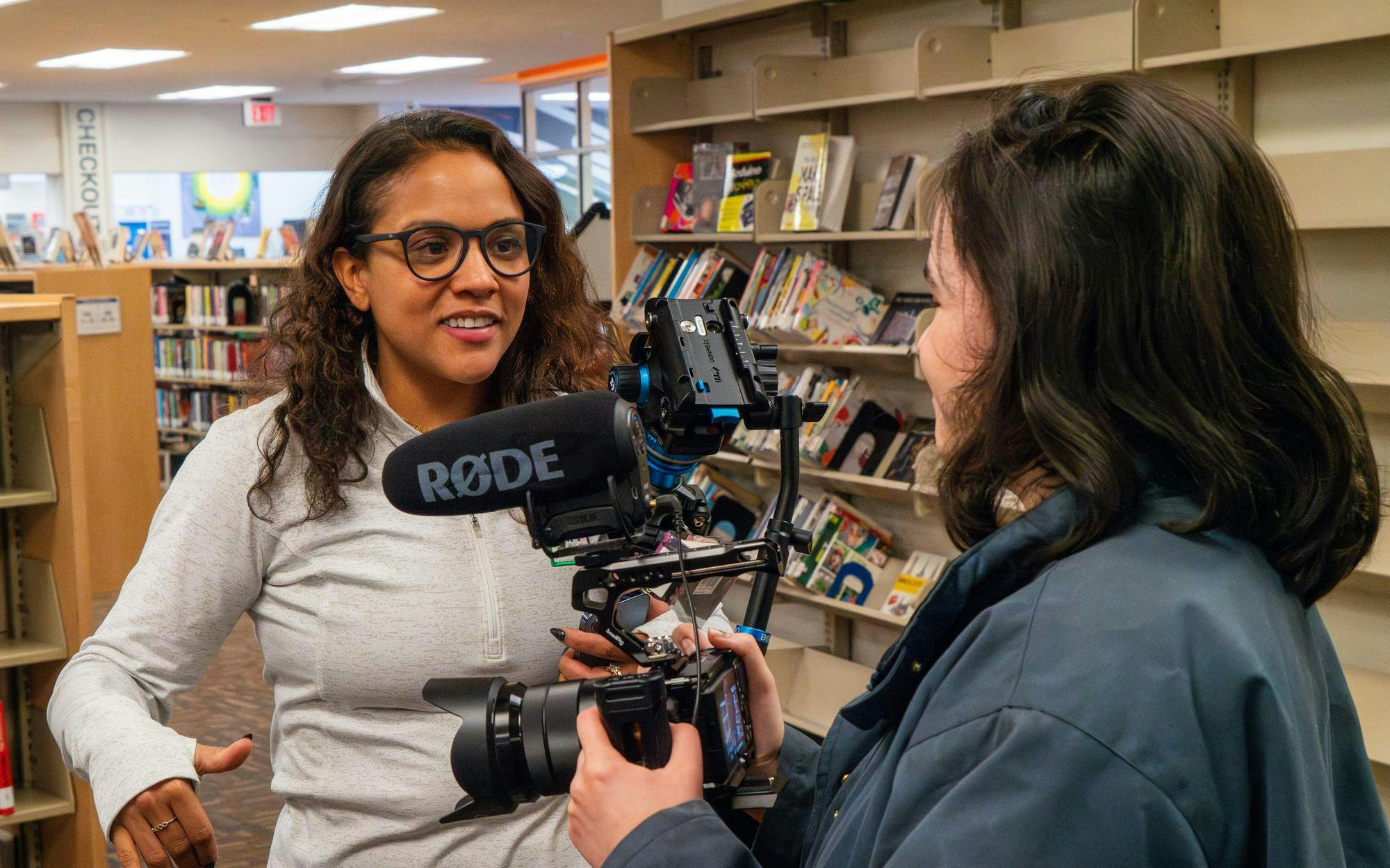In the modern age, maintaining trust in a community is a fundamental aspect of journalism. Yet after years of misrepresentation of marginalized communities, many have lost trust in the media.
The question of how the media can better represent communities and restore trust was on Associate Professor of journalism Danielle K. Brown’s mind for a long time. That same question eventually led her to Minneapolis, where the murder of George Floyd by police sparked protests nationwide.
"Race is still a problem in journalism," Brown said.
When Black Lives Matter protests were represented in the news, for example, Brown found that much of the media coverage delegitimized them by placing an overemphasis on destruction and the actions of people, rather than fully considering the reasons why people tend to engage in protest and civic action.
"It kind of makes them seem like a bunch of people being disruptive for a moment in time instead of really giving them the credit they need for being this really important, functioning piece of democracy," Brown said.
And when these kinds of messages are put out in the media, she said, it leads to people being less supportive of protests like Black Lives Matter, which tend to be positioned in media as more disruptive than other protests. And without public support, swaying politics becomes much more of a challenge.
So Brown sought to figure out what can change narrative patterns in the media and what can bring communities who may have been distrustful of the news back to their local news organizations.
For a while, she didn’t have any answers.
Eventually, however, she considered her late grandmother, asking herself what would make her pick up the paper.
"If I was in it," she said.
So Brown’s research led to The LIFT Project, a project she started after the murder of Floyd in 2020 that sought to collect data which would help fight the ways in which Black communities were being misrepresented in the media.
LIFT initially focused on Minneapolis, a community she described as "very close-knit," but also recovering from the murders of Floyd and Daunte Wright, as well as the aftermath of those events.
The project started by going into communities to survey and catalog who communities saw as "trusted messengers," or who people went to for the news. Then, she put that information into a rolodex and sent it to different news organizations in the area.
The data shows news organizations that, if their reporters have been repeatedly using, for example, only three trusted community members as sources, there may be another fourteen out there that they haven’t considered as sources.
"Can we do this community a favor that has been harmed by journalism on a regular basis by putting their people in as experts in this space?" Brown said.
Now, Brown's research focuses on more systematic ways she can present that information to communities, as well as how she can bring the LIFT project to Detroit and beyond. In other words, LIFT is a scalable project.
Journalism, however, does not exist in a vacuum. In fact, according to Brown’s research, while there are outliers in the stories that individual journalists tell, many of the issues plaguing modern journalism are a result of larger power systems that haven’t been fully considered.
Without those power systems changing, it’s hard for journalism to change. Teaching journalists how to better represent their communities is important and often broadens the way in which journalists think, but it doesn’t change the ways the other systems function and create content, she said.
So how can journalists instill change in their communities on their own?
Much of Brown’s work examines how journalists can better connect with communities, gain trust, and most importantly, maintain that trust. She’s found that turnover, for example, has the potential to be a big issue in journalism, especially student journalism.
Support student media!
Please consider donating to The State News and help fund the future of journalism.
"One of the toughest things that I have recognized is that in this university system with student journalists, you're in a newsroom for maybe two or three years and then you leave," Brown said.
So an issue has become finding ways for journalists to maintain communities' trust despite quick turnover. Even after journalists get out of college, Brown said journalism has developed a culture where it isn’t uncommon for journalists to bounce around for a while before finding "that million dollar contract."
However, Brown said that, typically, the journalists who have gained trust from the communities they’re reporting on are journalists who have taken the time to embed themselves in those communities. And when journalists have a community's trust, she said, then they have a much more holistic picture of who they are.
For student journalists, Brown stressed the importance of finding ways for journalists who are leaving to transfer trust, whether that be through mentorship or shadowing.
"Once you have trust and you lose it, it's really hard to rebuild again, and it is going to be hard with a new person because we're tied to an institution," Brown said.
Discussion
Share and discuss “How an MSU professor is healing wounds caused by media misrepresentation” on social media.


